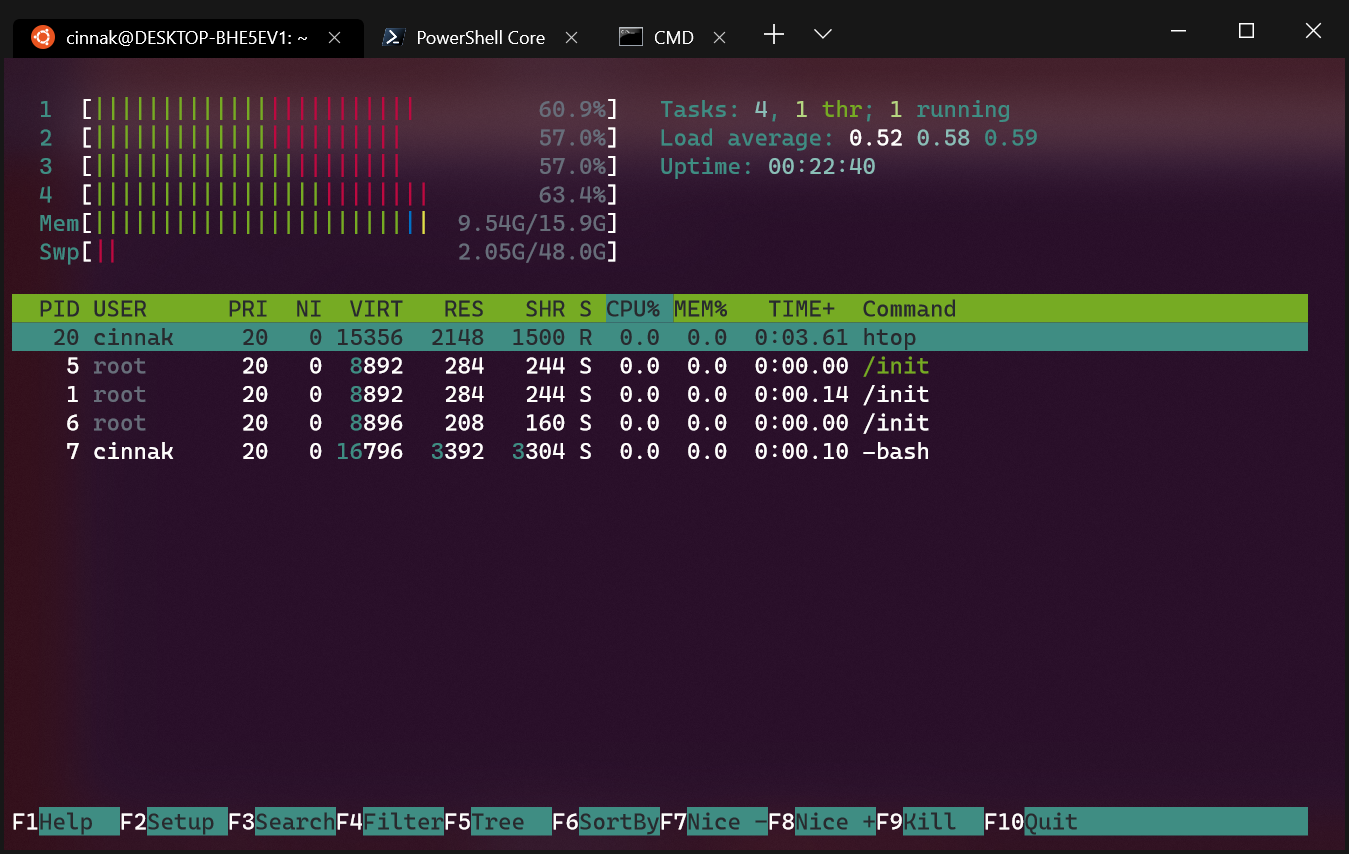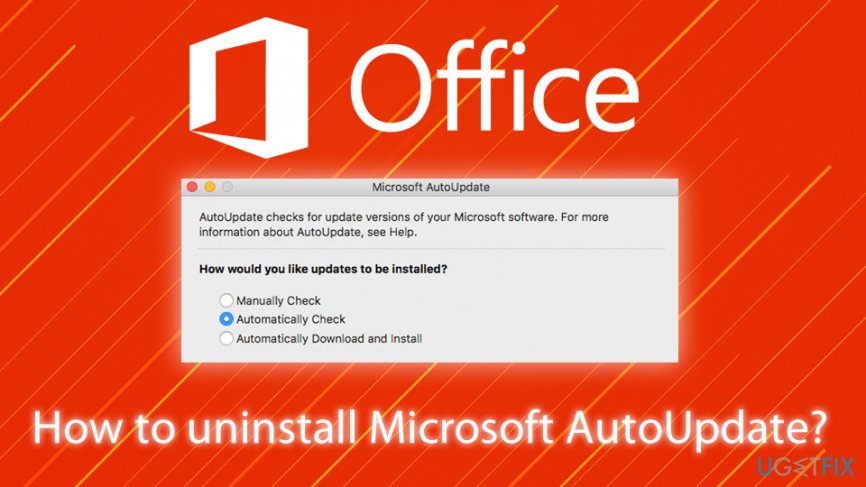- Microsoft Auto Update For Mac
- Microsoft Autoupdate For Mac Terminal Command List
- Microsoft Autoupdate For Mac Terminal Commands
- Microsoft Autoupdate For Mac Terminal Command Iphone 6
- Microsoft Autoupdate For Mac Terminal Command 10
- Microsoft Autoupdate For Mac Terminal Command 1
- Microsoft Autoupdate For Mac Terminal Command Download
What would you do if you need to remove Microsoft AutoUpdate? Simply drag and drop this app into trash? This is not enough for a thorough removal. Check out this tutorial to see how exactly to completely remove Microsoft AutoUpdate from your Mac. 2015-9-4 MS Office 2011 autoupdate via terminal Hey guys, My company has around 200 macs, and I am in charge of all patching and support. Earlier versions you could run MS autoupdate through terminal and it would work, but they have removed the ability for that. Can i somehow run some commands through terminal to update all the macs without needing. How to Fix Microsoft Office AutoUpdate for Mac not working. By Andre Da Costa. Last Updated on February 27, 2019. If you installed Office 2016 for Mac back in September but haven’t been able to.
Microsoft Auto Update For Mac
Jul 01, 2016 Node.js is updating quite frequently these days, so using your terminal on a Mac or command line on Windows would make update process faster. Updating Node.js on a Mac. To update node.js on a mac, through terminal, you have a lot of options through popular package managers or node.js version managers. N N is a very. 2020-3-25 Microsoft regularly publishes software updates to improve performance, security, and to deliver new features. To update Microsoft Defender ATP for Mac, a program named Microsoft AutoUpdate (MAU) is used. By default, MAU automatically. You’ve found the app you need, but you’re missing out on the best part of MacUpdate. Members perks: Unlock personalized app recommendations; Access exclusive, member-only discounts. Microsoft AutoUpdate (MAU) version 3.18 and later includes the msupdate command-line tool. これは、Office など、Mac 用に生成された Microsoft アプリケーションの更新プロセスを開始するために使用できます。This can be used to start the update process for.
Terminal User Guide
Use General preferences in Terminal to change the default window settings and the type of shell that’s used when a new window is opened in Terminal.
To change these preferences in the Terminal app on your Mac, choose Terminal > Preferences, then click General.
Option | Description | ||||||||||
|---|---|---|---|---|---|---|---|---|---|---|---|
On startup, open | Choose the initial window configuration.
| ||||||||||
Shells open with | Choose the shell that’s used when a new window opens.
| ||||||||||
New windows open with | Choose the profile and working directory for new windows.
| ||||||||||
New tabs open with | Choose the profile and working directory for new tabs.
| ||||||||||
Use ⌘-1 through ⌘-9 to switch tabs | Use keyboard shortcuts to select one of the first nine tabs in the tab bar. | ||||||||||
Applies to:Office for Mac, Office 2019 for Mac, Office 2016 for Mac
Microsoft AutoUpdate (MAU) version 3.18 and later includes the msupdate command-line tool. This can be used to start the update process for Microsoft applications produced for Mac, such as Office. The tool is primarily designed for IT administrators so that they have more precise control over when updates are applied. You can download the latest version of MAU from this link.
msupdate works by sending Apple Events to the MAU daemon. On macOS 10.14 Mojave and later, you may see a privacy prompt when running msupdate for the first time. If you are using an enterprise management tool such as Jamf Pro, you should deploy a Privacy Preferences Policy Control (PPPC) payload to pre-approve access. Samples of such a payload can be downloaded from here.
Use the following steps to start using the tool:
- Open the Terminal application
- Enter
cd /Library/Application Support/Microsoft/MAU2.0/Microsoft AutoUpdate.app/Contents/MacOS - Run
./msupdate --help
The following options are displayed:
Since PowerPoint can sync your presentations to OneDrive, you can start a presentation on your Mac, then edit and present using PowerPoint mobile. Let intelligent technology help you bring your presentation to life with a few clicks.Present with confidenceYou can make new presentations or continue working on existing ones. Go easy on your eyes with Dark Mode. PowerPoint makes it easy to focus on your presentation in low-light environments by supporting Dark Mode for macOS Mojave.Create presentations that stand outGet your ideas across with beautiful design, rich animation, cinematic motion, 3D models and icons. Update microsoft word to 64-bit mac.
Microsoft Autoupdate For Mac Terminal Command List
Examples of how to use msupdate
- Display the current configuration parameters for AutoUpdate:
./msupdate --config - Display the current configuration parameters in machine-readable format:
./msupdate --config --format plist - List all available updates:
./msupdate --list - Download and install all available updates:
./msupdate --install - Download and install the latest updates for Word, Excel, and PowerPoint:
./msupdate --install --apps MSWD2019 XCEL2019 PPT32019 - Download and install a version-specific update for Outlook:
./msupdate --install --apps OPIM2019 --version 16.17.180090901
Application identifiers
The following table lists the applications for Mac supported by AutoUpdate. The identifier is used when specifying the --apps parameter. When specifying multiple applications on the command-line, separate identifiers with a space.
| Application | Latest version1 | 2016 version2 |
|---|---|---|
| Word | MSWD2019 | MSWD15 |
| Excel | XCEL2019 | XCEL15 |
| PowerPoint | PPT32019 | PPT315 |
| Outlook | OPIM2019 | OPIM15 |
| OneNote | ONMC2019 | ONMC15 |
| MAU | MSau04 | MSau04 |
| OneDrive | ONDR18 | |
| Teams | TEAM01 | |
| Skype for Business | MSFB16 | |
| Remote Desktop | MSRD10 | |
| Intune Company Portal | IMCP01 | |
| Defender ATP | WDAV00 | |
| Edge Canary | EDCN01 | |
| Edge Dev | EDDV01 | |
| Edge Beta | EDBT01 | |
| Edge Stable | EDGE01 |
1 These identifiers are used for Office 2019 for Mac, either a retail or a volume licensed version, and for Office for Mac (from an Office 365 plan) running on macOS version 10.12 (Sierra) or higher.
Microsoft AutoUpdate makes sure your copy of Office will always be up-to-date with the latest security fixes and improvements. If you are an Office 365 subscriber, you'll also receive the newest features and tools. Check for updates and install. Open an Office app such as Word, then on the top menu, click Help Check for Updates. 
Microsoft Autoupdate For Mac Terminal Commands
2 These identifiers are used for Office 2016 for Mac, either a retail or a volume licensed version, and for Office for Mac (from an Office 365 plan) running on macOS version 10.11 (El Capitan) or earlier.
Microsoft Autoupdate For Mac Terminal Command Iphone 6
Note
Microsoft Autoupdate For Mac Terminal Command 10
- If an update is pending for MAU itself, that update must be applied before any applications can be updated.
- Identifiers are not case-sensitive when run interactively from the command-line, but use the character casing from the table above when running from a management tool such as Jamf Pro.
Microsoft Autoupdate For Mac Terminal Command 1
Related topics
Microsoft Autoupdate For Mac Terminal Command Download

- Update history and release notes for Office for Mac